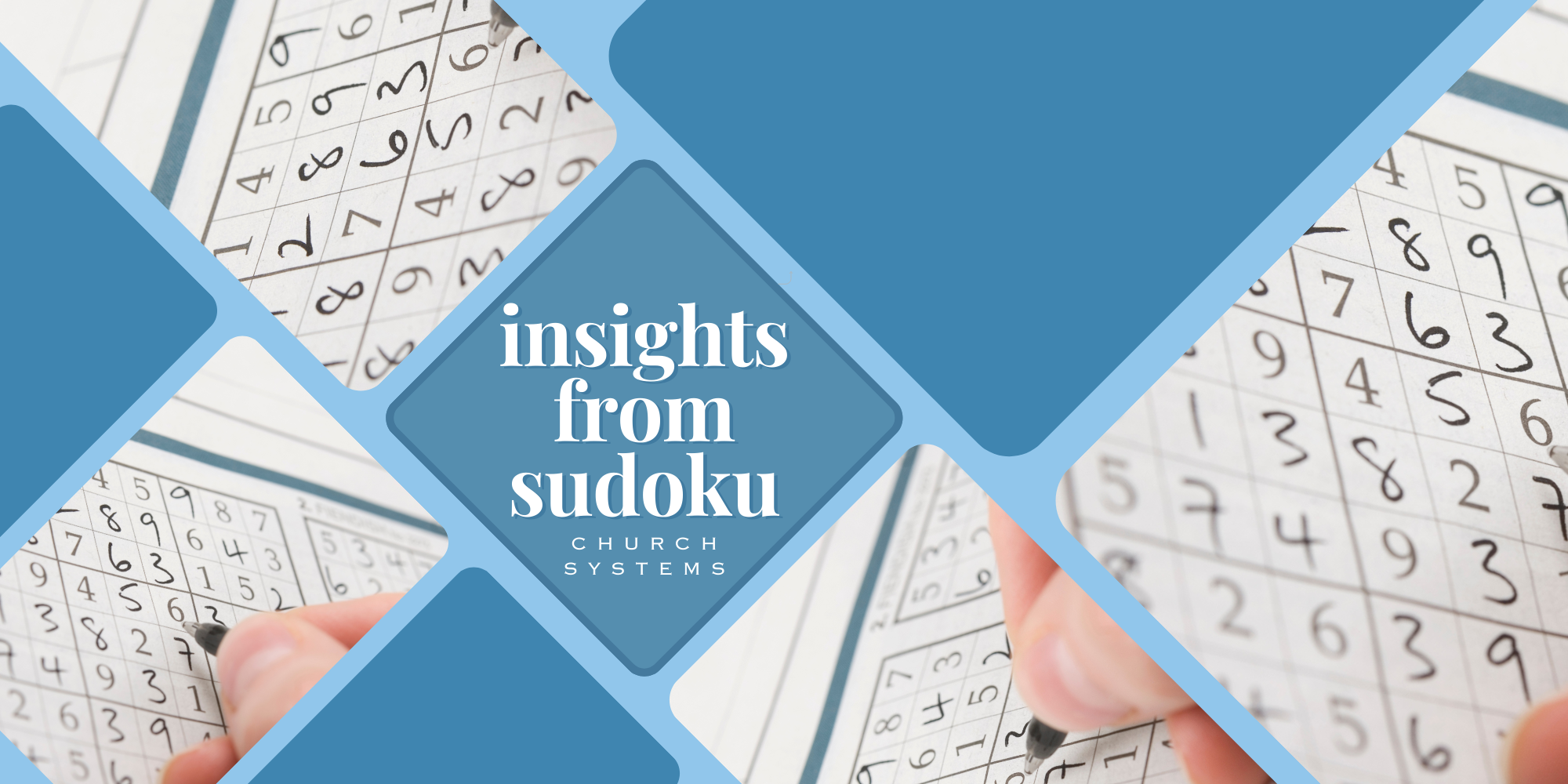This week, while engaging in a Samurai Sudoku puzzle, I came to the realization that there are lessons we can glean about church systems from these puzzles.
- The Samurai sudoku looks a lot like many church structures. The center grid represents the core of leadership in our organizations – whether this is the pastor or a particular governing body. The four outer grids can represent other groups with input in our systems – ministry and/or support staff, congregants, committees and boards, and denominational entities.
Each grid is distinct, yet they interact and overlap as part of the whole. Sudoku puzzles are ranked by difficulty level. The most difficult puzzles are the ones where you begin with the least amount of information. Our systems will achieve healthier functioning much more quickly if each group shares adequate and accurate information with all the other groups. We can’t live and work in silos—communication and cooperation are key!
- We must always keep the larger picture in view to complete the puzzle or help our organizations function optimally. Even when working on (or with) a certain segment, we must never lose sight of the whole, or we will miss important information we need for the current task.
- When we make a mistake in one grid or quadrant, all other grids/quadrants can be affected. The more complicated the grid, the more difficult it becomes to trace back to the source of the problem. With paper puzzles, we can erase and start over. In real life, we rarely have that option, so in a system, we must seek grace and accountability when inevitable mistakes are made.
- Conversely, a key insight or breakthrough in one area can open up the whole puzzle. If folks in a certain quadrant feel stuck, seeking input from others with a different perspective can yield new and important insights and revelations.
- In the most difficult sudoku puzzles, there sometimes comes a point where the next move cannot be determined by purely deductive logic. Puzzlers then employ a process called trailing, where you “try” one number in the grid and see if that number leads to other correct conclusions. Trailing is used only after careful study and analysis when no other information is available. As we continue to figure out how to be and do church in a fractured, post-COVID world, some trailing (and trusting the Spirit) will likely be necessary – we have learned that logic and information alone will not be enough.
- These things are harder than they look. Solving complex puzzles takes time, energy, and patience. With Sudoku puzzles, there is only one correct solution – fortunately, there is often more than one “right” answer in life.
Questions for Reflection
- Who is at the center of the grid in your congregation or organization? Does information flow freely through this grid to the others, or is greater transparency and sharing of information needed?
- Who occupies the other grids in your system? Do they tend to remain in their grid or silo, or do they interact with the other grids appropriately?
- As a leader in your system, do you tend to focus more on the big picture, or are you more task and detail-oriented, focusing on smaller parts of the whole? Both are needed in leadership, but we all tend to have strengths in one area or another. Identify your strengths and invite others with complementary strengths to provide help and insights as needed.
- When you work on a big “puzzle” in your system, do you spend time gathering available information from all parts of the grid before you begin to work, or do you tend to jump in too quickly?
The Center for Healthy Churches and PneuMatrix can help you navigate conversations around your church systems.

Leave a Reply